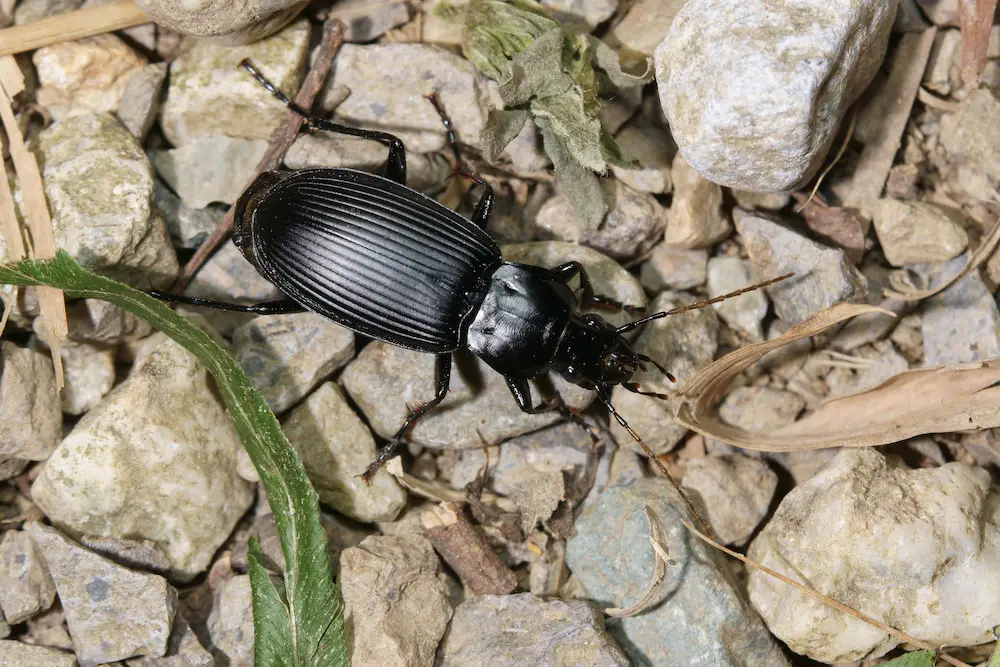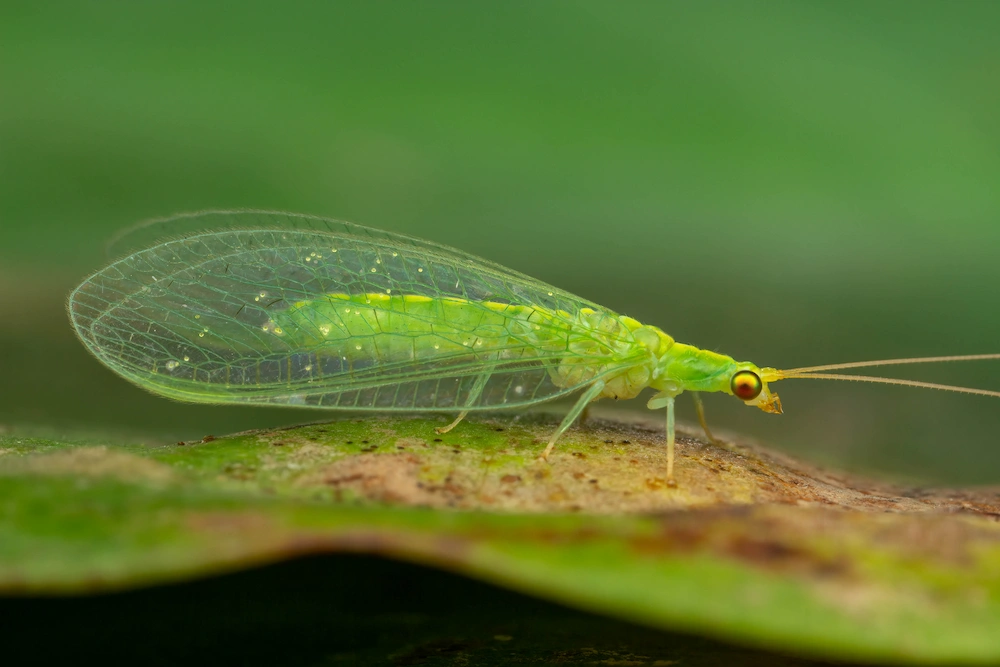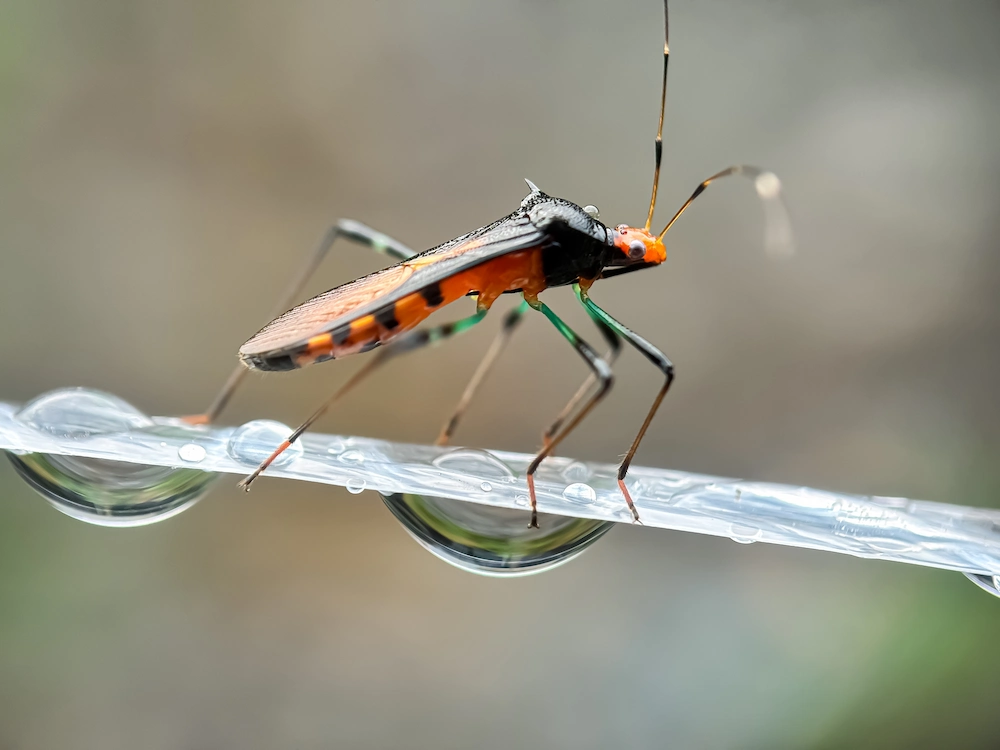These 5 Carnivorous Pests Might Surprise You!
These 5 Carnivorous Pests Might Surprise You!
Summary: There are many eco-friendly ways to prevent pests, and one of them doesn’t involve any effort from us. This blog describes the carnivorous diets of 5 notable pests that unknowingly help us by eating smaller pests. Green Pest Services provides family-friendly pest control that keeps pests away for the long run.
Insect diets have to be the most random in the animal kingdom.
In a collection of insects that visit a garden, you could find a critter that feeds on leaves, another that enjoys decaying fruit, and yet another that wants to get inside the house to devour carpet fibers. But one insect diet is our favorite because of how much it benefits us: carnivorous insects that eat other insects and tiny critters.
Some of these insects look like they would easily devour their own kind (ahem, praying mantises) because of their intimidating appearances. Other carnivorous insects are great examples of “don’t judge a book by its cover.”
Let’s talk about four predatory pests that provide all-natural pest control with their carnivorous diets (perfect for Earth Day!).
Tiger Beetles

Although these look like typical beetles, the name hints at their diet. Tiger beetles are half an inch to an inch long, and are found in open areas with lots of dirt. They can be black, brown, or metallic green in color. Tiger beetles are active day and night since they tunnel into the dirt and therefore don’t depend on the sun for light.
Adult tiger beetles use their large pincers to catch their prey around plants and foliage. They dig vertical tunnels and stay near the entrance, then attack any garden pests that get too close. Their favorites include beetles, spiders, flies, and ants.
The larval stage is not nearly as mobile as the adult stage, but tiger beetle larvae are still great at catching their prey. They stay more towards the surface of the tunnels while they wait for other pests to venture near the opening. The tiny hooks on the larvae’s sides help them to stay connected to the tunnels until they leap out and snag the prey.
Conversely, adult tiger beetles will hunt and attack their prey with ferocity. They’re often too fast for humans to catch, never mind other creatures that want to eat the tiger beetles. But it’s actually good that these beetles are so tough to catch: their pincers deliver quite the painful pinch to our hands!
Hover Flies

You would think a fly that spends its days hovering over flowers would only eat nectar and pollen, but hover fly larvae are completely carnivorous.
The larvae mostly eat aphids, and not just because they enjoy the taste. Female hover flies purposefully lay their eggs near aphid colonies so that the hatched eggs have an immediate food source. They will eat any soft-bodied insects found near plants, and aphids certainly fit the bill. Since the larvae are so small, they can solve an aphid problem before we know it.
Once the larvae grow into adult hover flies, they spend their lives being confused for wasps. Both species have black and yellow stripes, dart around quickly, and stay near flowers and fields. But there are some key differences that make it easy for us to differentiate between angry wasps and harmless hover flies.
The main differences are:
- Hover flies have two wings, while wasps have four wings.
- Hover flies have short abdomens, while wasps have long bodies and narrow waists.
- Hover flies have noticeable red eyes, while wasps have dark compound eyes.
- Hover flies don’t have stingers, while wasps do.
- Hover flies are peaceful pollinators, while wasps are defensive social insects.
Ground Beetles

Ground beetles look like any other black beetle, but they eat other insects instead of the usual leaves. These one-inch-long beetles eat the pests found around soil, like slugs and cutworms. The beetle’s quick reflexes and pincer mouth allow it to quickly pierce its prey for easy snacking.
Since ground beetles are nocturnal, they hide in plant debris during the day to prevent being spotted by larger creatures. This is why you may see tiny black bugs scurrying for cover when you remove clusters of leaves during yard work.
Since ground beetles live in topsoil, they have easy access to any pests crawling around the plants. Their strong jaws are great for breaking through their prey’s soft shells. Some ground beetles can even climb up plants in order to reach pests on higher levels, giving them a variety of food.
Thankfully, ground beetles do not spread diseases or want to bug us (literally). They’re just harmless carnivores in the garden. But if they turn to your home in search of houseplant prey, it will be pretty annoying to find tiny black beetles crawling around your house.
Green Lacewings

It may be shocking to learn that green lacewings are great providers of natural pest control, considering they look like strange leaves. But this insect is very similar to the hover fly because the larvae are carnivorous and the adults are pollinators.
Green lacewings, also called “aphid lions,” hatch about 4 to 10 days after the eggs are laid. The larvae then go on to devour aphids left and right, and often save plants from being completely drained by aphid infestations. In addition to aphids, green lacewing larvae also eat mites, spider mites, whiteflies, thrips, scales, and caterpillars.
Once they become adults, green lacewings turn their attention to flowers and pollination. They eat flower nectar, pollinate the flowers, and drink the honeydew from aphids. Green lacewings may blend in with the greenery at first, but their habit of holding up their wings while at rest gives them away.
Green lacewings may be confused with katydids upon first glance, but the major difference is all in the wings. Green lacewings have thinly-veined wings that are almost transparent, while katydids have solid wings that look very similar to leaves.
Assassin Bugs

The name definitely gives away this pest’s diet, but they don’t look that scary. This bug is elongated in every way; its head, body, legs, and mouth parts are all long. It can be 1/2 an inch to 3/4 of an inch long. Most assassin bugs are black, gray, black and orange, or a mix of colors.
These pests average one to two generations a year, with a generation of eggs overwintering. Females lay clusters of 10 to 40 eggs on the terrestrial plants they call home. Since assassin bugs prefer to walk instead of fly, their diet is limited to the pests found on the same plant.
The assassin bug has quite the hunting process. When it spots its prey, it quietly stalks the critter until the assassin bug is close enough to impale it with its sharp mouthparts. The carnivorous bug injects its prey with venom, then drinks the poor bug’s innards as a meal.
From larvae to nymphs to adults, no insect life stage is safe from assassin bugs. Their favorite prey are caterpillars, bees, and lacewings. However, the meal that is most helpful to us is one that most carnivorous bugs don’t dare to eat: brown marmorated stink bugs. Assassin bugs aren’t afraid of a little stench!
No Pest is a Match for Green Pest Services
Many avid gardeners recommend leaving beneficial insects alone in order to continue receiving free natural pest control. While these insects do provide some help to us by reducing the tiny pest population, the predatory insects will become a problem themselves if they reproduce and take over the backyard.
At Green Pest Services, our knowledgable technicians eliminate pest problems without damaging the yard’s general ecosystem. From prevention to elimination, we are dedicated to solving each pest issue as safely and efficiently as possible. Contact our team to learn how we will eliminate your pests, no matter what their diets are.
Citations
Assassin bugs. (n.d.). Fairfax Gardening. Retrieved April 15, 2025, from https://fairfaxgardening.org/assassin-bugs/
Five pest-eating predatory insects to know and love. (2020, July 17). Sky Nursery. Retrieved April 15, 2025, from https://skynursery.com/2020/07/17/five-pest-eating-predatory-insects-to-know-and-love/
Gibb, T.J. (2016, August 9). Do not confuse hover flies with sweat bee. Purdue University. Available at https://extension.entm.purdue.edu/publications/HN-94.pdf (Accessed on April 15, 2025).
Royer, T., Grantham, R., & Arnold, D.C. (2022, July). Beneficial insects. Oklahoma State University Extension. Available at https://extension.okstate.edu/fact-sheets/beneficial-insects.html (Accessed on April 15, 2025).
Tiger beetles. (n.d.). Missouri Department of Conservation. Retrieved April 15, 2025, from https://mdc.mo.gov/discover-nature/field-guide/tiger-beetles
Wasp vs hoverfly: What’s the difference?. (n.d.). Pest Defence. Retrieved April 15, 2025, from https://www.pestdefence.co.uk/news/wasp-vs-hoverfly-whats-the-difference/
8 Creative Ways to Have a Pest-Free Fourth of July
8 Creative Ways to Have a Pest-Free Fourth of July 8 Creative Ways to Have a Pest-Free Fourth of July Summary: The Fourth [...]
A Simple Guide to Preventing Stinging Pests
A Simple Guide to Preventing Stinging Pests A Simple Guide to Preventing Stinging Pests Summary: Stinging insects are more active in warm weather, [...]
These 10 Natural Mosquito Repellents Can Actually Help
These 10 Natural Mosquito Repellents Can Actually Help These 10 Natural Mosquito Repellents Can Actually Help Summary: Natural mosquito repellents are easier to [...]
How to Get Rid of Carpet Beetles
How to Get Rid of Carpet Beetles How to Get Rid of Carpet Beetles Summary: Carpet beetles are sneaky pests that don’t usually [...]
How Do Roaches Affect Asthma and Allergies?
How Do Roaches Affect Asthma and Allergies? How Do Roaches Affect Asthma and Allergies? Summary: It’s no secret that pests impact human health, [...]
These 5 Carnivorous Pests Might Surprise You!
These 5 Carnivorous Pests Might Surprise You! These 5 Carnivorous Pests Might Surprise You! Summary: There are many eco-friendly ways to prevent pests, [...]

